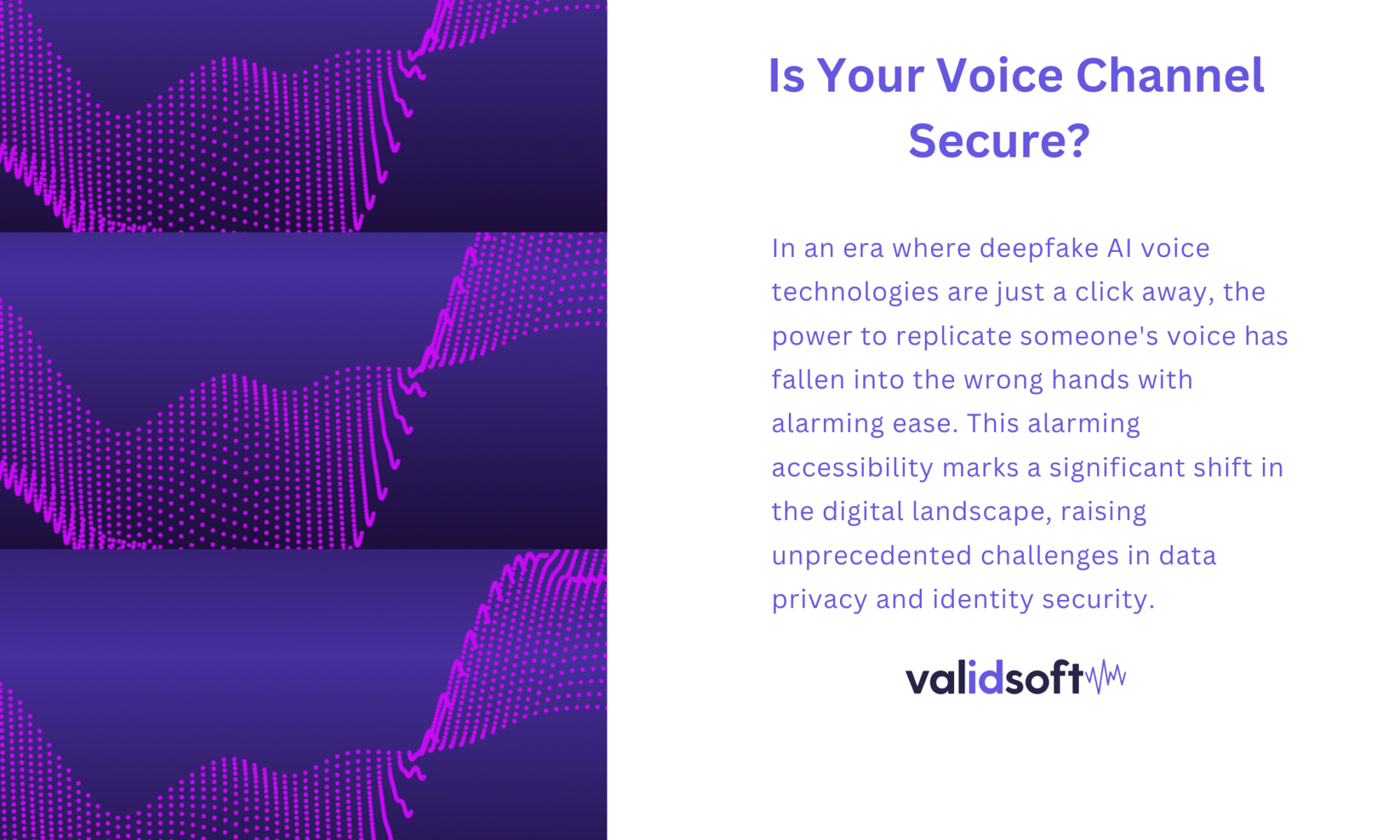The rise of deepfake AI voice technologies has ushered in a new era where the lines between reality and artificial reproduction are increasingly blurred. The burgeoning accessibility of deepfake audio tools and the risks they pose across the industry create a pressing need for effective deepfake detection solutions like ValidSoft’s Voice Verity™.
Deepfake AI Voice tools
The landscape of AI voice generation has undergone a dramatic transformation, making it alarmingly easy for anyone to create deepfake voices. The proliferation of celebrity AI voice generators and deepfake apps has significantly lowered the barrier to entry. Tools like FakeYou, DeepFaceLab, and Wombo AI have democratized this technology, making it accessible to the masses.
The ease of access to these tools highlights a significant shift in the deepfake landscape. Without adequate regulation, applications like FakeYou and DeepFaceLab are readily available, posing ongoing threats to data privacy and identity security.
The alarming trend of deepfake audio misuse, as seen in recent cases involving figures like Tim Draper, Martin Lewis, Sadiq Khan, and Sir Keir Starmer, highlights the urgent issue of trust and integrity breaches in various sectors worldwide. Leveraging AI to alter audio recordings, deepfakes have been used for spreading false information, tarnishing reputations, and creating unrest.
For instance, a deepfake of Tim Draper’s voice was misused to endorse a fraudulent COVID-19 cure and a cryptocurrency scam. Similarly, an artificial replication of Martin Lewis’s voice tricked people into investing in a non-existent financial scheme. In the political arena, manipulated audios of Sadiq Khan and Sir Keir Starmer were used to fabricate controversial statements, damaging their public image. These instances illustrate the ease with which deepfake audio can be used for harmful purposes. They underscore the critical need for effective deepfake detection, increased public awareness, and stringent regulations to prevent the exploitation of this advanced technology.
Data Privacy and Identity Fraud Risks
The widespread availability of deepfake tools raises significant concerns regarding data privacy and identity fraud. These AI-generated voices can be misused for identity theft, financial fraud, and damaging reputations. The alarming accuracy with which these tools mimic voices can deceive voice channel security systems, leading to unauthorized data access and exploitation. This threat is going to continue to become more pervasive and the tools that are already easily accessible are going to become more sophisticated. The danger lies in waiting for the threat to evolve further and not taking the steps today with already available deepfake detection tools, such as ValidSoft’s Voice Verity™, for protection.
Legislative Response and the Importance of Regulation
Governments and regulatory bodies are increasingly aware of the deepfake threat and are taking action. India is set to become the first country in the world to regulate deepfakes amid ethical concerns. Similarly, the US’s Deepfake Report Act of 2023 and the EU’s Artificial Intelligence Act are crucial steps toward addressing these challenges. These legislative measures are pivotal in establishing norms and standards for AI usage but also underscore the need for continuous evolution in response to technological advancements.
How Validsoft Protects Identity and Data Privacy
To counter this threat and restore trust, it’s crucial to have effective deepfake detection tools. Voice Verity™, developed using advanced speech science and audio analysis algorithms, excels in identifying the nuanced differences between human and synthetic voices. This technology detects the unique irregularities typically present in AI-generated audio, thereby offering a high degree of accuracy. ValidSoft’s innovative solution can analyze any audio source in real-time to verify its authenticity. This means it can accurately determine whether a voice is authentically human or a product of deepfake technology, even without the need for previous data on the user. This capability is essential in maintaining the integrity of voice communications in the era of accessible generative AI technologies.



